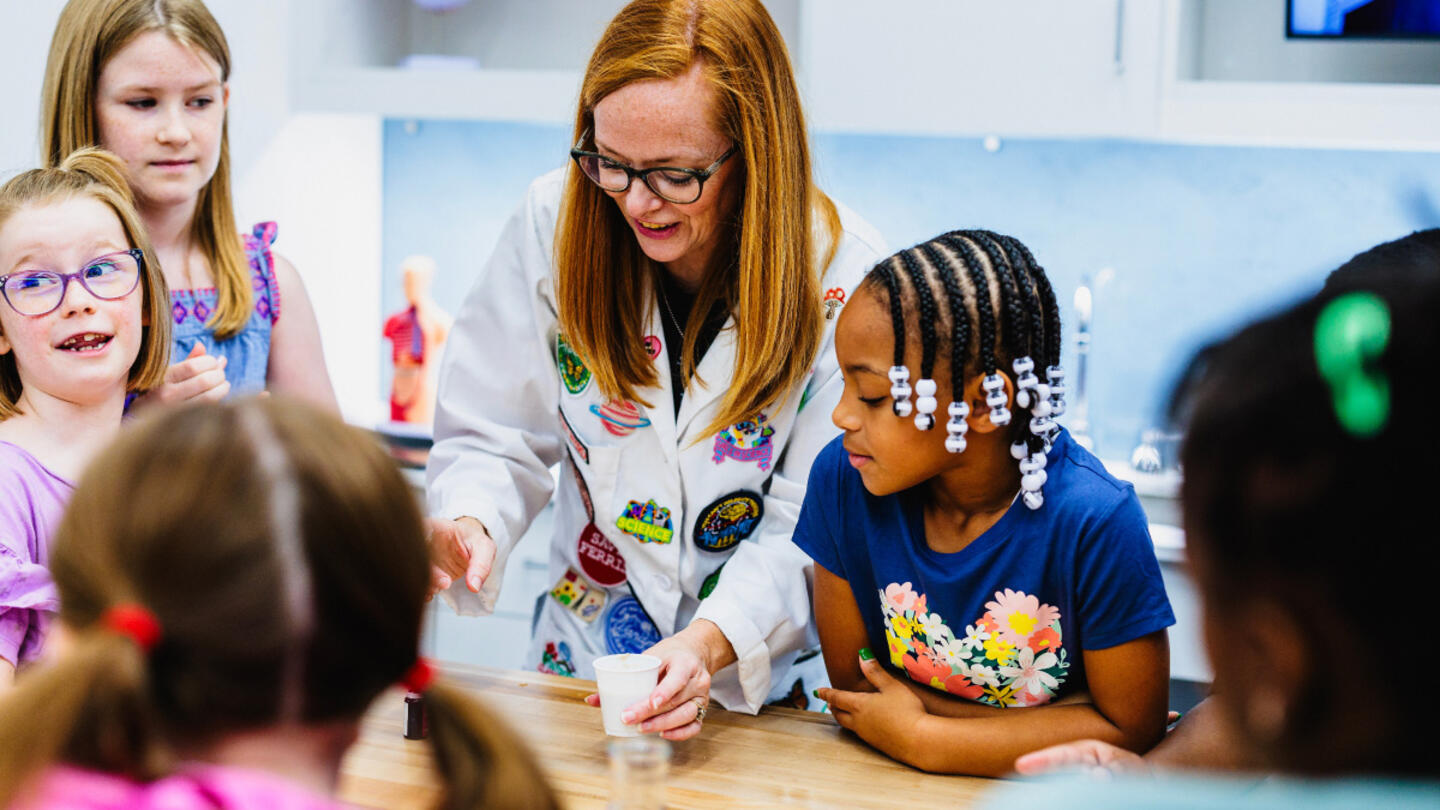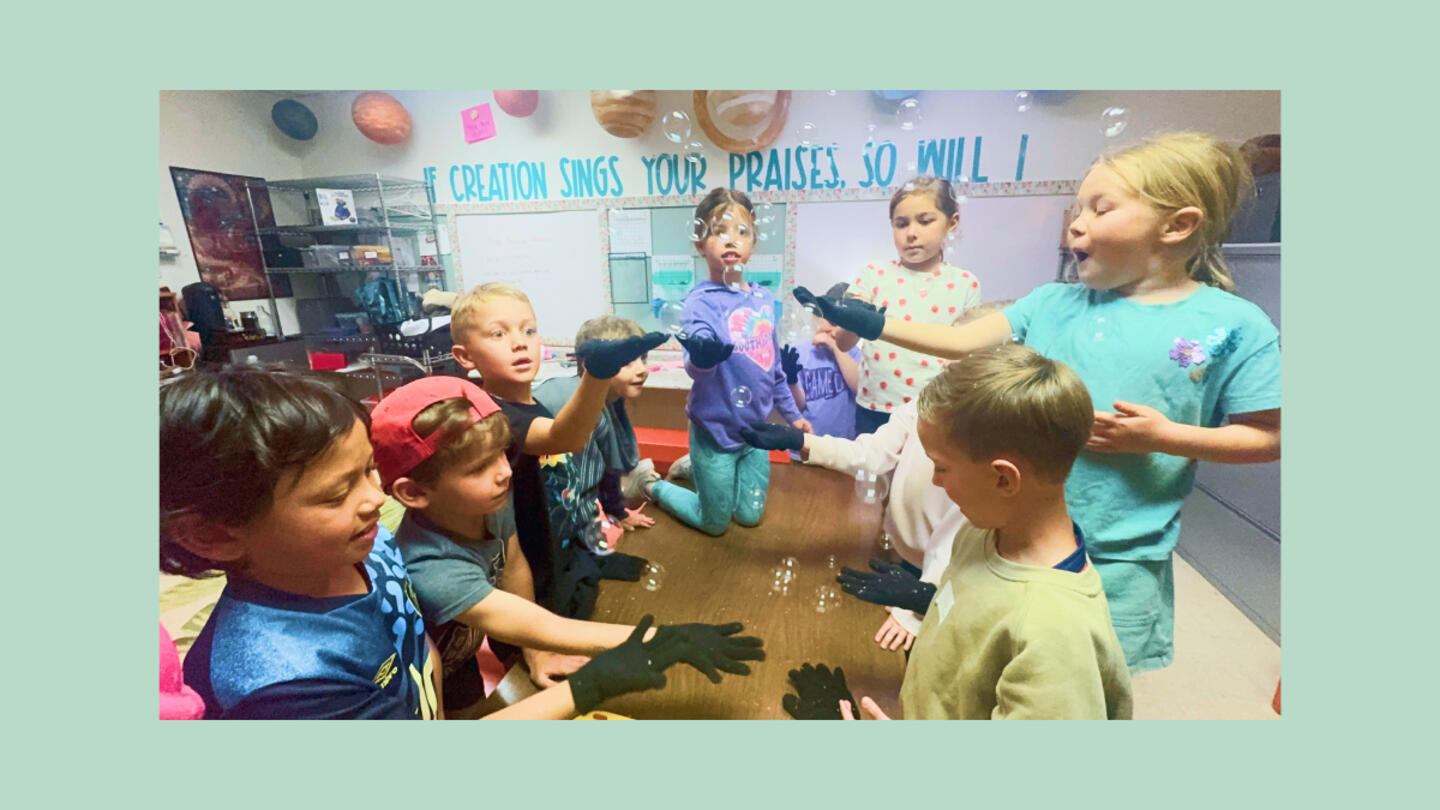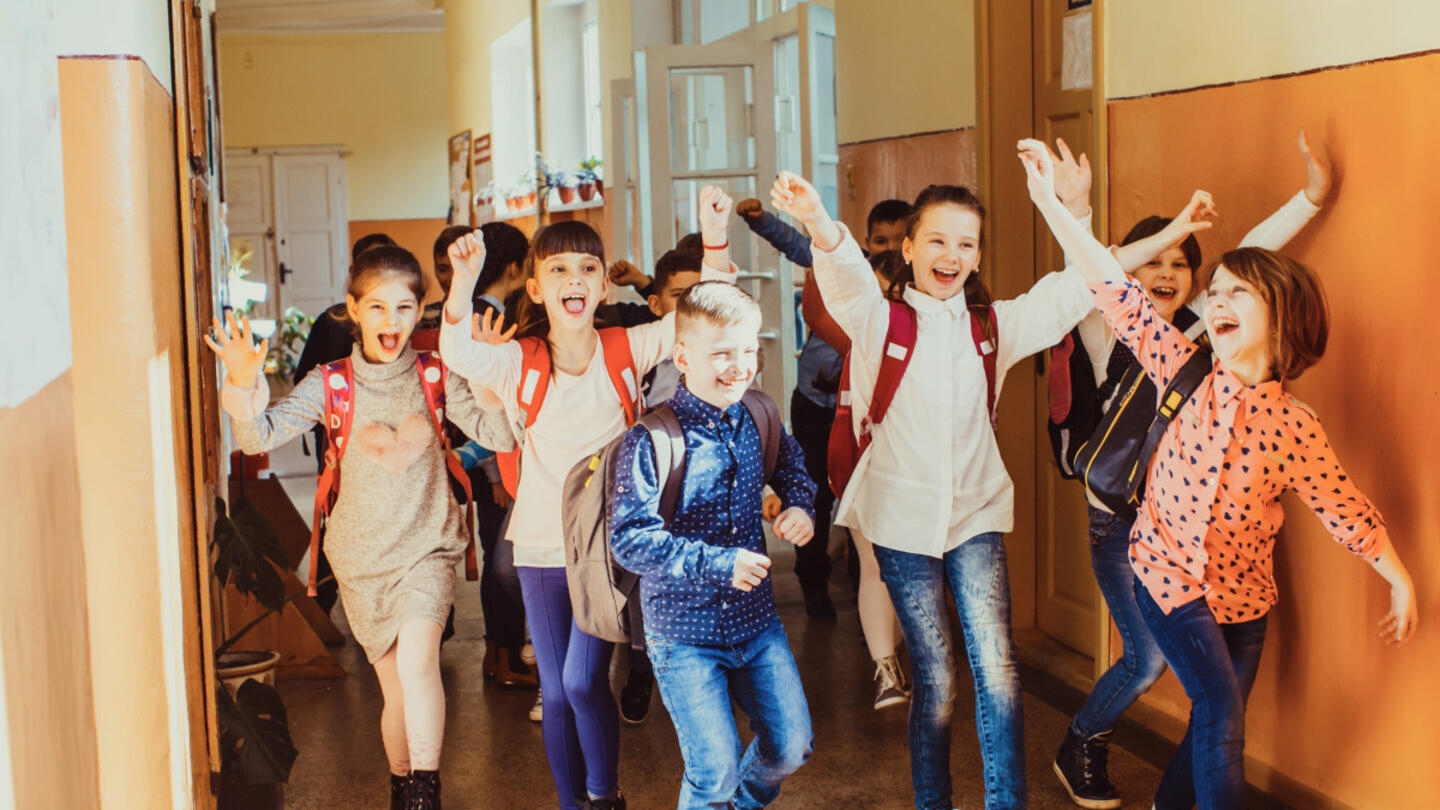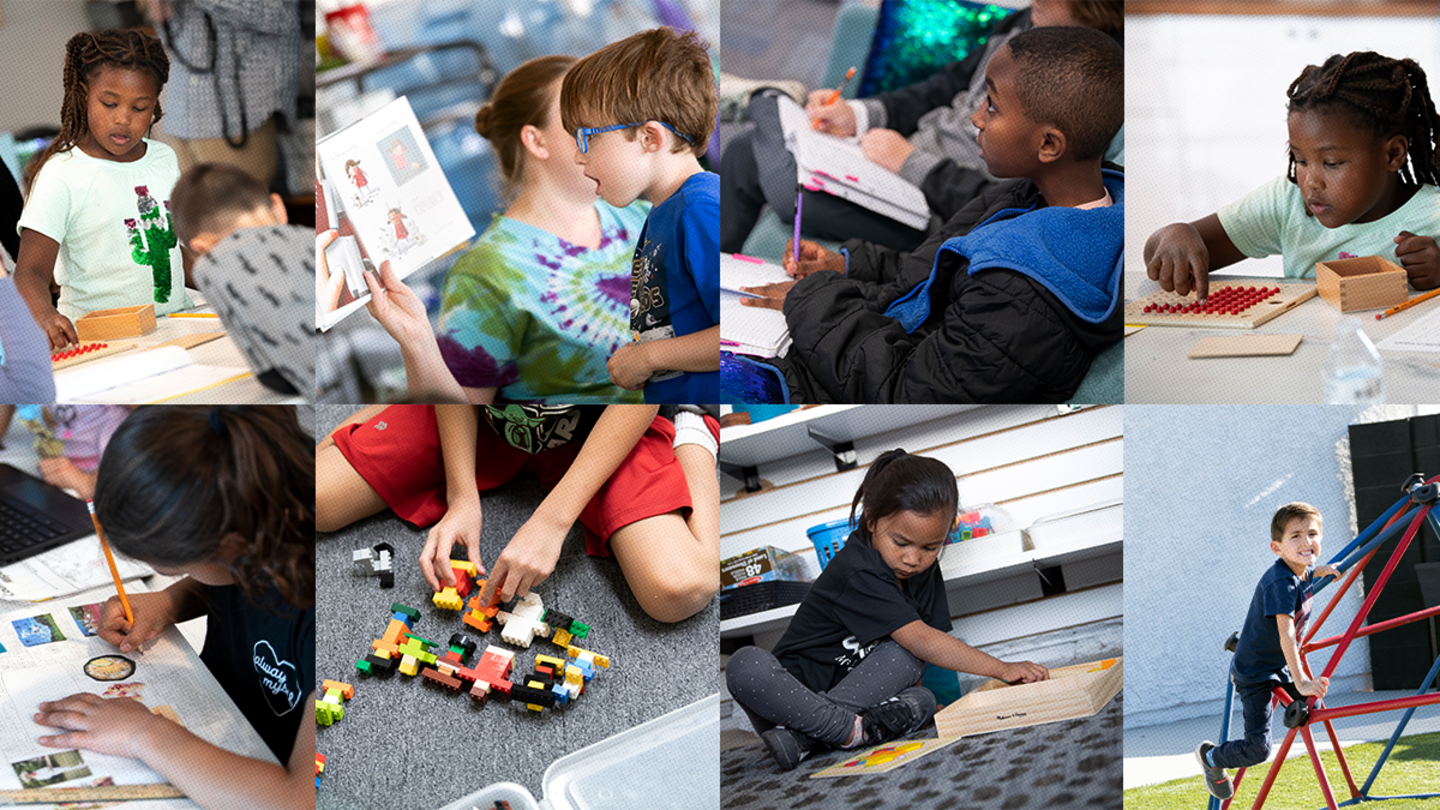Justine Russell had to hold back tears the first time her son, Nick Marta, came home from Soar Academy, a microschool in Augusta, Georgia. At 16, he had attended six different schools and was declined admission at others. He had tried every type of schooling his mother could find.
“He’s tried regular school and online school,” she said. “He’s gone to a regular private school and one that was branded especially for kids with special needs. We’ve tried homeschooling, unschooling, all these different things, and nothing really worked for him.” His troubles ranged from poorly executed individualized education programs to bullying and social issues.
Soar Academy was different. “Within two days, he didn’t want me to pick him up,” his mother said. “He wanted to stay longer.”
Nick has both autism spectrum disorder and attention deficit hyperactivity disorder . “He’s smart, but in a very unconventional way,” Russell explained.
Nick’s story is not unique. Many students at Soar Academy have similar histories of multiple schools, social challenges, bullying, and poor academic growth.
“These are the kids who aren’t thriving in traditional school,” said Kenisha Skaggs, director and founder of Soar Academy. At this microschool, 85% of students are “neurodivergent,” meaning they have ASD, ADHD, dyslexia, or social and emotional learning delays. Many, like Nick, have more than one condition.
Students often start several grades behind in math and reading and suffer from severe mental illnesses such as anorexia and depression. The curriculum is highly personalized and flexible, addressing the holistic needs of each child. It may include academics, emotional counseling, occupational therapy, animal therapy, social skills training, yoga, outdoor learning, or one-on-one support. The list is as long as the students are unique.
Why do students at this microschool thrive when traditional schools fail them?
When the teacher tells you not to mess with the system
In the early 2000s, Skaggs was in college for her accounting degree and working for an inner-city school in Augusta, where she did basic math and reading interventions for severely underserved students in a role funded by the No Child Left Behind initiative.
The students she was working with weren’t learning because they weren’t engaged. She asked her employer to experiment with project-based learning, but they weren’t interested.
“We’re getting a lot of money from the government,” she remembered being told. “And you’re making a lot of money. That’s it.”
Except, that wasn’t it. “I was not just about getting a paycheck,” said Skaggs. “I really wanted to show the kids what life could be with a good education. I was interested in changing the trajectory for these kids.”
Later, when she graduated and realized she hated accounting, she decided to start a school. With $700 in the bank, she quit her accounting job and started a school in her attic. She began with 10 students. Within three months, she had 20 students.
“I noticed that they were all neurodivergent,” she said. “That wasn’t what I intended, but obviously these are the kids who weren’t thriving in the school system.”
Skaggs drew upon her experiences as a homeschool student. She knew what it looked like to accommodate different kids with different learning styles, so she started in the most logical place: getting to know her students.
You can’t teach a child that doesn’t trust you
The most important thing that Skaggs did (and is still doing) for her students has nothing to do with academic training. It’s what they were missing in the many other schools they tried before they found Soar.
She cares about them. She openly acknowledges students’ challenges as part of who they are and then works tirelessly to make learning a fun and happy experience for them.
It can feel new and even false at first — this kindness and caring. When they arrive, some students are surprised. They tell her things like: “I don’t trust teachers because I’ve been called dumb and put in the back of the class, or I’ve been pulled out and stuck on the computer all day doing nothing,” Skaggs explained.
She has found that you cannot separate a child’s mental or emotional state from their ability to learn. “I guarantee you, when you build that trust with kids, and when they feel like you actually care, they will do anything for you,” Skaggs said. This can translate into working hard to learn something or to change their behavior.
“These are kids that have been rejected by public schools. The IEPs are terrible: ‘defiant,’ ‘won’t do work,’ ‘cries,’ ‘throws things,’ ‘bullies.’ All these things disappear at Soar because students believe they are important, and they have that mental health and sensory support.”
Soar Academy now has a student body of about 200 kids ages 6 to 18 — including 70 who attend full-time. The academy also has five partner schools learning to support neurodivergent students, and a second Soar Academy in Oklahoma is in the works.
Sign up for Stand Together's K-12 newsletter and get stories, ideas, and advice from changemakers who are transforming education across the country.
How to prioritize mental health: Put it first, literally
Skaggs has increasingly brought in other professionals to support the children holistically — teachers, mental health therapists, occupational therapists, and a life coach. These experts have made student support at the microschool second to none.
“When students come to school in the morning, the first thing we do is stop and ask them, ‘How are you feeling?’” Skaggs explained. “There’s a wall, and they can select how they’re feeling. Do you want high engagement today? Low engagement? Do you want to work independently? Do you want to talk to a counselor or therapist? They can select what’s going on. Before I even start asking them, ‘What’s (x ⨉ y)2?’ I’m checking in on their personal well-being.”
Older students work with a life coach on a mental health program designed specifically for neurodivergent teens, where they learn about emotional intelligence, self-advocacy, resiliency, and communication. At completion, 83% of them said they felt more equipped to handle the challenges of life.
Russell’s 12-year-old daughter, Phoebe, also attends the school. Before she switched to Soar, she was having daily panic attacks. Now, they only happen once a month. “The environment was the problem,” her mom said. “She’s back to her old self now. In fact, she’s better than she used to be.”
The teachers at her new school understand Phoebe’s need to separate herself when she gets overwhelmed. “She’s the kid that will hear the lights buzzing and the air conditioner going and the teachers talking, and it’s just all too much,” her mom said. “At Soar, she has the freedom to do what she knows she needs to do to make herself feel better. They don’t ask questions. They know what she’s doing. She’s going somewhere to calm down. They’ll just come in and check on her.”
At her previous middle school, “Phoebe would have to traverse all the kids,” her mom said. “She would probably have to ask the teacher [to leave the room] because they don’t trust children.”
Nick’s emotional health has also improved dramatically. For him, being around other neurodiverse kids has been a game-changer. “The first day, he met another child just like him — same problems, same bullying, similar history,” his mom said. “They’ve been best friends ever since.”
He also gets so excited about what he’s learning that he often brings it home, like the minerals and rocks he dug up on a quarry field trip. “He’ll sit there and tell me about them now,” Russell said. “He’ll tell me, ‘This is quartz, and you can find it here.’ It’s just so many little things that I didn’t realize he wasn’t doing, but now, maybe his brain is calm, and he feels that he can share these things.”
Do schools have to sacrifice academic achievement to improve mental health?
Soar Academy is accredited and covers Georgia’s performance standards. Students focus on traditional academics every Tuesday through Thursday, including extensive reading and math intervention. The learning is project-based and real-world connected. Mondays are for students and teachers to plan weekly projects together. Fridays always include field trips.
Students perform as well as their peers on state standardized tests — which is to say, they perform better than they ever did in their previous schools. They also do well on the SAT, and the ones who want to go to college do.
As with everything, academics are tuned to the student’s ability and learning style. The personalization can get very specific, but it’s also critical to reaching students and keeping them engaged.
Tianna was a ninth-grader who tested at a first-grade math and reading level when she joined Soar. “A ninth-grader knows if they’re doing a first-grade curriculum,” said Skaggs. How could she design a reading curriculum that wouldn’t make Tianna feel childish?
“The first month is about building a relationship, building a connection,” said Skaggs. “It’s not about academics. I have to get her to trust that we actually care first.”
She assigned Tianna to spend her first month making TikToks. They could be about whatever she wanted. The only requirement was that she had to incorporate her weekly reading words. Skaggs knew it was working when Tianna started asking for her words early each week.
Tianna is now in 11th grade and almost at grade level. She hopes to major in math in college.
Parents tell Skaggs things like “My child believes they belong,” Skaggs said, adding: “They come out of their room now. My child can read now, and they couldn’t read when they came here. I had no idea what my child was capable of.”
Justine Russell doesn’t know what she would have done with Nick if she hadn’t found this school. “We probably would have ended up doing homeschool again,” she said. “I love my child dearly, but he doesn’t learn from me.”
“We are definitely changing outcomes for these kids,” said Skaggs. “They aren’t ‘dumb’ or ‘stupid.’ They’ve just been passed along all these years.”
***
Soar Academy is supported by VELA, which, as part of the Stand Together community, supports everyday entrepreneurs who are boldly reimagining education.
Learn more about Stand Together’s education efforts and explore ways you can partner with us.

This colearning space has the potential to bridge the divide between public and private education.

New Johns Hopkins data shows homeschooling’s recent surge has transformed the education landscape.
Step 1: Find the best learning environment for your child. Step 2? Figure out how to pay for it.

Here’s what happens when AI replaces teachers.
